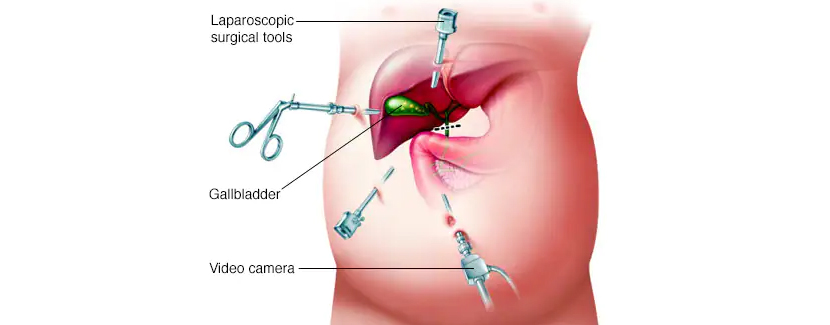Laparoscopic Cholecystectomy

Laparoscopic cholecystectomy is minimally invasive surgery to remove the gallbladder. It helps people when gallstones cause inflammation, pain or infection. The surgery involves a few small incisions, and most people go home the same day and soon return to normal activities. Call your healthcare provider if you have any problems after surgery.
What is a laparoscopic cholecystectomy?
A laparoscopic cholecystectomy is surgery to remove your gallbladder.
The surgeon makes a few small incisions on the right side of your abdomen (belly). The surgeon uses one incision to insert a laparoscope, a thin tube with a camera on the end. This shows your gallbladder on a screen. The gallbladder then gets removed through another small incision.
A laparoscopic cholecystectomy is less invasive than an open cholecystectomy. This other form of gallbladder removal involves a larger incision.
What happens during laparoscopic cholecystectomy?
Laparoscopic cholecystectomy takes about an hour or two. A surgeon will make a few small incisions in your abdomen. The surgeon will insert thin, hollow tubes into those incisions. The surgical team will then place a laparoscope and other surgical tools into the tubes.
Your team may pump carbon dioxide into your abdomen. This step inflates the surgical area and makes it easier to see inside. Using the special tools, the surgeon will detach the gallbladder from the rest of the body and remove it. The team will then close the incisions with stitches, surgical clips or surgical glue.
If any complications occur during laparoscopic cholecystectomy, the surgeon may decide to use an open cholecystectomy instead. That procedure involves a larger incision.










